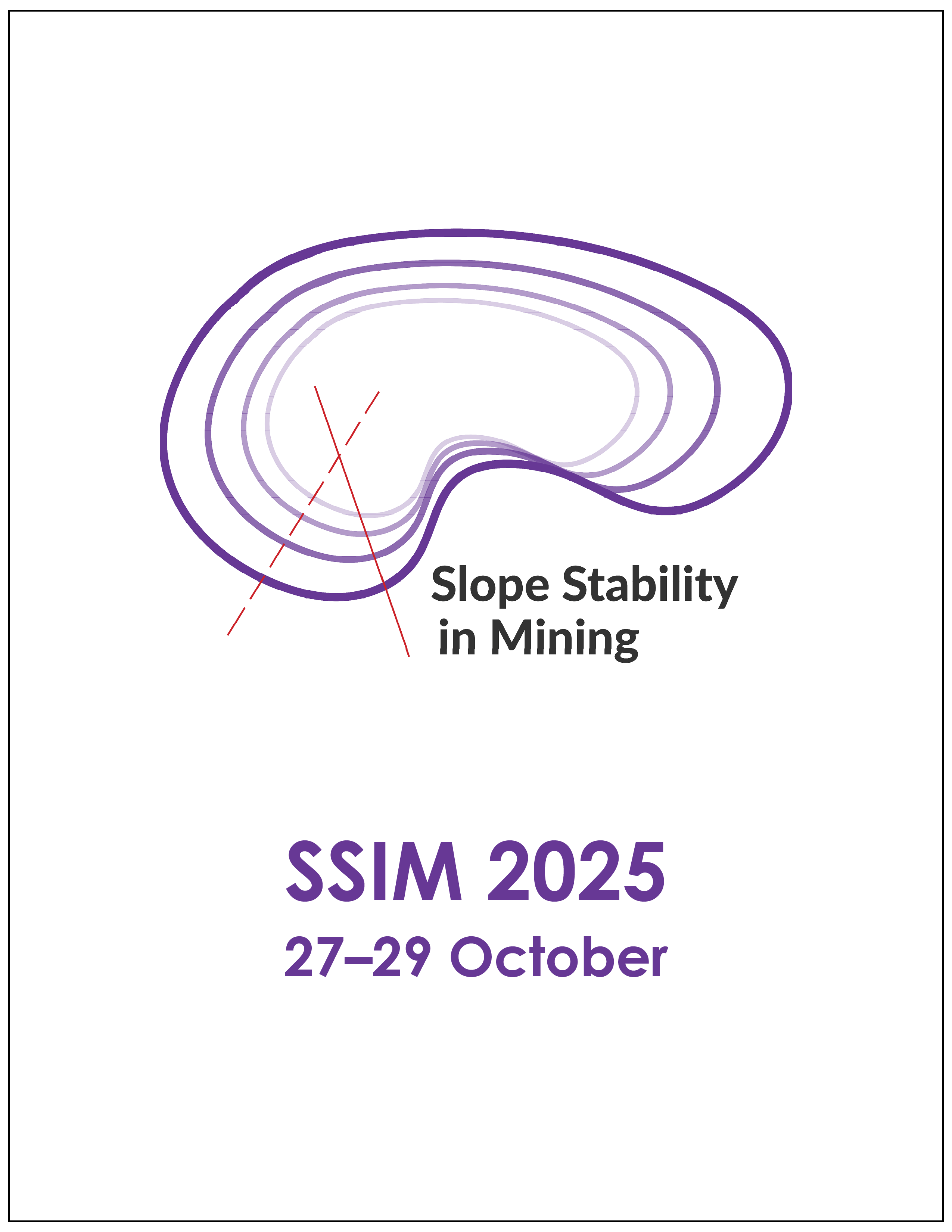Structural analysis and modelling in an evolving mineral resources operation

|
Authors: Shahin, S; Jani, A; Arrys, N |
DOI https://doi.org/10.36487/ACG_repo/2535_26
Cite As:
Shahin, S, Jani, A & Arrys, N 2025, 'Structural analysis and modelling in an evolving mineral resources operation', in JJ Potter & J Wesseloo (eds), SSIM 2025: Fourth International Slope Stability in Mining Conference, Australian Centre for Geomechanics, Perth, https://doi.org/10.36487/ACG_repo/2535_26
Abstract:
Optimising pit slope stability and reducing the strip ratio of a mining operation are two key tasks in geotechnical engineering. With a growing demand for minerals and an increasing cost associated with extraction, companies are constantly re-evaluating the viability of mineral deposits and challenging their geological understanding. Within Rio Tinto Iron Ore, the structural geology (SG) team investigate and collect critical data, such as pointbased orientations, mapping and geological inferences from adjacent pits to re-model deposits where previous interpretations have failed to account for structurally controlled slope failures. Utilising innovative data collection methods and data-driven investigation, SG aims to address the root causes of slope instability and the opportunity for improved mineral mining. Resource drilling evaluation is often the majority source of data in bulk commodity extractions and will often bias data collection to a specific orientation with their vertical drilling orientation and regimented grid layout. This data bias can significantly reduce the capability to identify and qualify complexity, hence limiting confidence and reliability of the structural model which geotechnical design and decisions are built upon. Without the consideration of complexity and the capability of capturing the appropriate nature of geotechnical design domains, mining operations run the risk of inadequately designed slopes that may fail and potentially harm personnel. Regional structural trends have been considered in conjunction with surface and in-pit mapping data to model multi-batter fold structures that were absent from previous iterations of the structural model. The structural model update is a 3D compilation of the upper Marra Mamba stratigraphy partitioned into six sub members and the detrital/bedrock contact spanning a model volume of ~6.25 × 2.50 × 3.80 km (length, width, breadth). Modelled stratigraphy in the Marra Mamba subunits are often defined by shale bands or packages amongst banded iron formation (BIF) units that are the target mineralised ore. A rheological contrast between the BIF and shale in the stratigraphy denotes potential anisotropic surfaces that are of concern in geotechnical design. The latest iteration of the structural model aims to address the issues of historical slope instability along planes of anisotropy and linking observed structures in the pit with the Pilbara regions deformational history. Critical risks and opportunities have been identified in newly identified dip-slope and rock mass controlled sectors of the geotechnical design rather than a ubiquitous dip-slope sector across the previously adopted pit design. Such improvements forecast a reduced cost to operation and improved extraction of ore at depth.
Keywords: structural geology, geotechnical design, optimisation, slope stability, risk mitigation
References:
Blockley, JG, Tehnas, IK, Mandyczewsky, A & Morris, RC 1993, ‘Proposed stratigraphic subdivisions of the Marra Mamba Iron Formation and the lower Wittenoom Dolomite, Hamersley Group, Western Australia’, Geological Survey of Western Australia, Professional Papers, vol. 24, pp. 1–18.
Dey, J, Roy, S & Matin, A 2021, ‘Drone photogrammetry: a structural data gathering tool for open pit mining geotechnics’, in PM Dight (ed.), SSIM 2021: Proceedings of the Second International Slope Stability in Mining, Australian Centre for Geomechanics, Perth, pp. 135–148,
Kepert, DA 2008, ‘The mapped stratigraphy and structure of the mining area C region, Hamersley province’, iBlack Monolith, Geological Survey of Western Australia, Perth, pp. 1–107.
MacLeod, WN, De La Hunty, LE, Jones, WR & Halligan, R 1963, A Preliminary Report on the Hamersley Iron Province, NW Division, Geological Survey of Western Australia, Perth, pp. 44–54.
Read, J & Stacey, P 2009, Guidelines for Open Pit Slope Design, CSIRO Publishing, Collingwood.
Taylor, D, Dalstra, HJ, Harding, AE, Broadbent, GC & Barley, ME 2001, ‘Genesis of high-grade hematite orebodies of the Hamersley Province, Western Australia’, Economic Geology, vol. 96, no. 4, pp. 837–873.
Thiele, ST, Grose, L, Samsu, A, Micklethwaite, S, Vollgger, SA & Cruden, AR 2017, ‘Rapid, semi-automatic fracture and contact mapping for point clouds, images and geophysical data’, Solid Earth, vol. 8, no. 6, pp. 1241–1253,
Trendall, AF, Blockley, JG & Harding, AE 1970, The Iron Formations of the Precambrian Hamersley Group, Western Australia, With Special Reference to the Associated Crocidolite, Geological Survey of Western Australia, Perth, pp. 1–364.
Trendall, AF, Compston, W, Nelson, DR, De Laeter, JR & Bennet, VC 2004, ‘SHRIMP zircon ages constraining the depositional chronology of the Hamersley Group, Western Australia’, The Iron Formations of the Precambrian Hamersley Group, Western Australia, With Special Reference to the Associated Crocidolite, vol. 51, no. 5, pp. 621–644,
Tyler, IM & Thorne, AM 1990, ‘The northern margin of the Capricorn Orogen, Western Australia—an example of an Early Proterozoic collision zone’, Journal of Structural Geology, vol. 12, no. 5–6, pp. 685–701,
© Copyright 2025, Australian Centre for Geomechanics (ACG), The University of Western Australia. All rights reserved.
View copyright/legal information
Please direct any queries or error reports to repository-acg@uwa.edu.au
View copyright/legal information
Please direct any queries or error reports to repository-acg@uwa.edu.au

